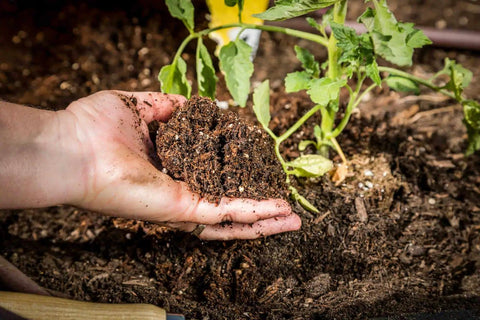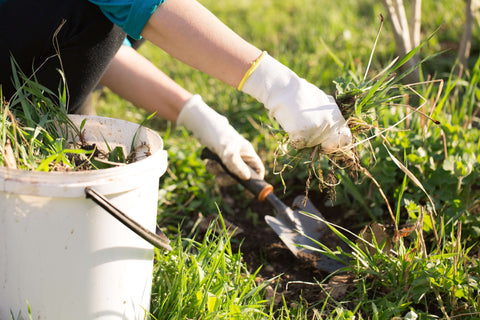Gardening enthusiasts know that successful plant growth starts with the soil. For those who embrace the convenience and benefits of raised garden beds, the choice of soil mix becomes a pivotal factor in nurturing healthy, vibrant plants. In this comprehensive guide, we will delve into the art of creating the perfect soil mix for your eco-friendly raised garden beds. These beds, designed with innovative features and sustainable materials, provide an optimal canvas for cultivating a diverse range of plants while contributing to a greener future.

Why Soil Mix Matters in Raised Garden Beds
Choosing the right soil mix is crucial for the success of your raised garden beds. Unlike traditional in-ground gardening, raised beds offer more control over the soil environment. This means you have the opportunity to tailor the soil mix to meet the specific needs of your plants. Here's why soil mix matters:
- Drainage and Aeration: Raised beds often have better drainage and aeration than the surrounding ground. A well-structured soil mix ensures excess water can escape, preventing root rot and waterlogging.
- Nutrient Availability: The right blend of soil components provides essential nutrients to plants, supporting their growth and development. A balanced nutrient profile reduces the need for frequent fertilization.
- Root Development: A loose and well-textured soil mix encourages healthy root development, allowing plants to establish strong root systems that can access water and nutrients efficiently.
- Soil Compaction: Raised beds can sometimes be subjected to compaction due to foot traffic or frequent maintenance. A well-designed soil mix resists compaction, ensuring long-term soil health.
- pH Balance: The pH level of the soil impacts nutrient availability to plants. A customized soil mix allows you to adjust the pH to suit the preferences of the plants you're growing.
Crafting the Perfect Soil Mix for Your Eco-Friendly Raised Garden Beds
Creating an ideal soil mix involves a combination of various components that cater to the specific needs of your plants. Here's a breakdown of each component and its role:
- Garden Soil or Topsoil:
Garden soil or topsoil forms the base of your soil mix. It provides structure, minerals, and some nutrients to your plants. However, it's important to note that native garden soil may vary in quality, so consider supplementing it with other components.
- Compost:
Compost is a nutrient-rich component that improves soil structure, retains moisture, and enhances microbial activity. It's an excellent source of organic matter that benefits plant growth.
- Peat Moss or Coconut Coir:
Peat moss or coconut coir enhances water retention and aeration. They prevent soil from becoming too compacted and improve moisture distribution throughout the raised bed.
- Perlite or Vermiculite:
These components add lightweight and improve drainage in the soil mix. They create air pockets that facilitate root growth and prevent waterlogging.
- Vermicompost:
Vermicompost, also known as worm castings, is a premium organic fertilizer that enriches the soil with essential nutrients and beneficial microorganisms.
- Mineral Additives:
To fine-tune your soil mix, you can incorporate mineral additives like rock dust, greensand, or bone meal. These additives provide long-term nutrient availability and contribute to soil health.
- Microbial Inoculants:
Microbial inoculants such as mycorrhizal fungi and beneficial bacteria foster symbiotic relationships with plant roots, enhancing nutrient uptake and overall plant vigor.

The Recipe: Creating the Perfect Soil Mix
Here's a basic recipe for creating a well-balanced soil mix for your eco-friendly raised garden beds:
- 50% Garden Soil or Topsoil
- 20% Compost
- 10% Peat Moss or Coconut Coir
- 10% Perlite or Vermiculite
- 5% Vermicompost
- 5% Mineral Additives (mix of rock dust, greensand, and bone meal)
- Microbial Inoculants as per manufacturer's instructions
Steps to Prepare Your Soil Mix
- Clear the Bed: Start with a clean slate. Remove any debris, weeds, or rocks from the raised bed.
- Mix Components: In a large container or wheelbarrow, combine the components following the recipe. Mix thoroughly to ensure an even distribution.
- Fill the Bed: Fill your raised garden bed with the prepared soil mix, leaving a few inches of space from the top to allow for watering and settling.
- Water and Settle: Water the soil thoroughly to help it settle. This also helps in identifying if any settling occurs, so you can add more soil if needed.
- Mulch: Apply a layer of mulch on top of the soil to retain moisture and prevent weed growth. This completes the creation of your optimal soil environment.

Maintaining Your Soil Mix and Garden Beds
To ensure the longevity of your soil mix and the health of your plants, consider these maintenance tips:
- Crop Rotation: Rotate crops each season to prevent the depletion of specific nutrients from the soil.
- Regular Testing: Periodically test your soil's pH and nutrient levels to make adjustments if necessary.
- Top-Dressing: Replenish nutrients by top-dressing your beds with compost or vermicompost during the growing season.
- Cover Crops: When your raised beds are not in use, plant cover crops to protect and enrich the soil.
- Mulch Maintenance: Refresh the mulch layer as needed to retain moisture and discourage weed growth.
- Watering Practices: Water your raised beds consistently and adjust the frequency based on weather conditions and the needs of your plants.
Conclusion
Crafting the perfect soil mix for your raised garden beds is an art that directly impacts the success of your gardening endeavors. By understanding the role of each soil component and its contribution to drainage, aeration, nutrient availability, and root development, you can create a thriving environment for your plants. With the right soil mix in your innovative raised beds, you're not only enhancing the beauty of your garden but also making a conscious contribution to sustainable and eco-friendly gardening practices









